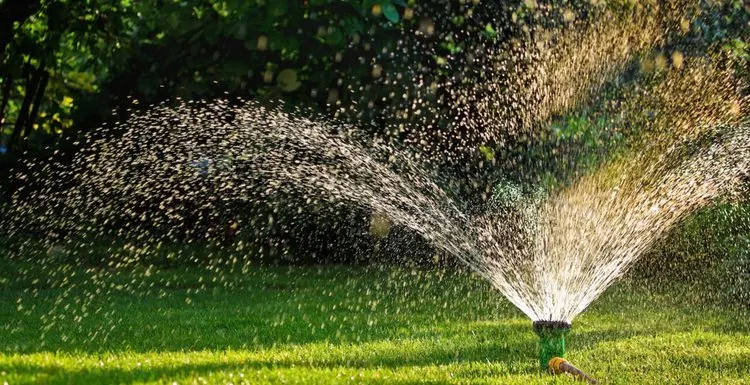In this article, we’ll answer this question and give some helpful watering tips to keep your lawn as green as possible.
Your lawn, yard, and garden get the best water absorption in the morning when everything is cooler.
The heat of the sun and the power of the wind might dehydrate your grass and shrubs if you water later in the day, especially if it’s bright, warm, and breezy.
As such, watering early in the day gives the water a better chance of reaching the roots and being properly absorbed by the soil.
But it’s also possible to overwater your lawn. Read on to learn how.
Why Morning Is the Best
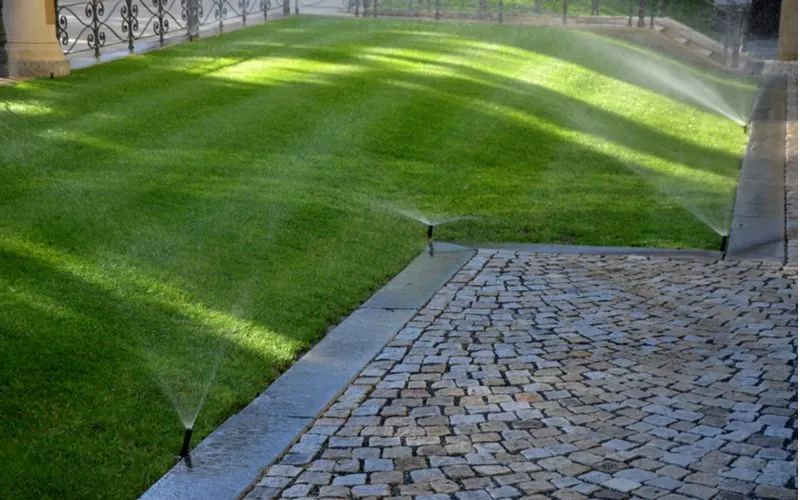
Beekeepx/Shutterstock
Early in the morning, between 6 a.m. and 10 a.m., is the best time to water your lawn. This allows the soil and roots to absorb the water.
Watering during the day is a waste of time and water since the high temperatures encourage rapid evaporation, turning the water into gas before it’s absorbed by the soil.
Evening watering can also be harmful. The lack of sunlight results in soggy grass overnight, encouraging fungus growth.
You also should avoid watering your yard when it’s windy; wind blows the water out of your yard and increases evaporation.
Deep Watering
Deep watering your lawn encourages the roots to lengthen and absorb more nutrients, moisture, and oxygen.
Depending on the type of grass you have, you should give your yard at least 1–1.5 inches of water per week, including rainfall.
Lawns that receive enough water have deep root systems, allowing the grass to stay hydrated during the heat of the day. It’ll stay green as long as it doesn’t encounter drought conditions, disease, weeds, or other problems.
To ensure you’re watering your lawn properly, use the “screwdriver test.” Insert a screwdriver into the dirt, and if it readily penetrates 6–8 inches, your grass was watered adequately.
If you can’t water the grass between the hours of 4 a.m. and 10 a.m. during the week, it’s better to wait until the weekend mornings rather than doing so after work.
If you don’t have an in-ground sprinkler system, consider buying a hose timer. These let you automatically control the water flow.
Things to Consider When Watering

Geobor/Shutterstock
Ensuring your lawn is receiving adequate moisture entails more than just watering it early in the morning. Consider the following factors as well:
The Frequency of Watering
Contrary to common sense, the amount of water your lawn needs to stay healthy and flourish is more important than how frequently you water it. That’s right—watering for 20 minutes twice a week is better than watering for 10 minutes three times a week.
A lawn typically requires at least 1–1.5 inches of water each week. During the summer months or in hot climates, you need to water the grass more regularly than in the spring.
As a general guideline, watering your lawn deeply 2-3 times per week is better than quickly watering it daily.
Just as watering too little can harm your lawn, so can overwatering. Watering too much means giving your lawn more water than the soil can absorb, leading to fungal infections and mushroom growth.
Your Soil Type
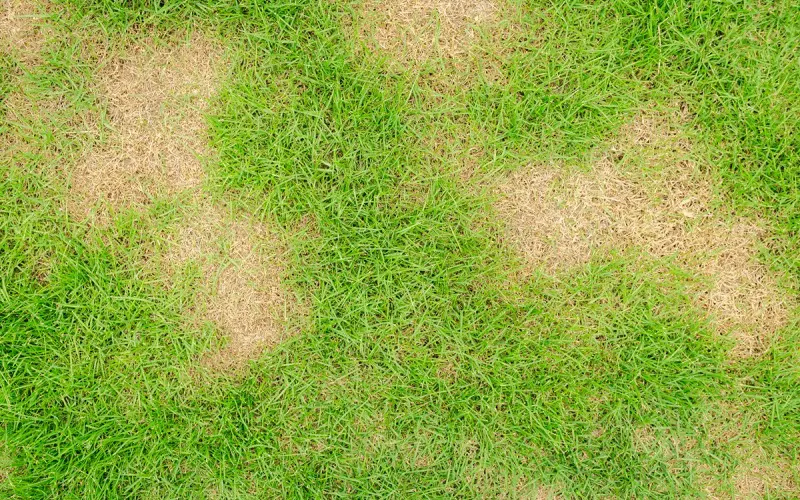
SingjaiStocker/Shutterstock
If watering your lawn for 30 minutes at a time (about one inch of water) every three days isn’t resulting in improvements, the soil could be to blame.
Large air gaps in coarse, sandy soil allow water to move quickly, meaning such soils should be irrigated more frequently and for shorter periods.
On the other hand, the smaller gaps in heavier clay soils absorb and store water longer, requiring less frequent deep watering.
If you live in a region with sandy or clay soil, consider applying humus to improve damaged turf.
This organic material is formed in soil by decaying plants and animals, especially leaves, twigs, and other plant parts that pile up after dropping off onto the ground.
Adding hummus to a lawn improves the water-retention capacity of sandy and clay soils, as well as the efficiency of any fertilizer you regularly use on your lawn.
The Correct Amount of Water
Setting a sprinkler system or your irrigation process to its highest level and soaking your grass as quickly as possible might seem logical, but it could result in runoff.
Runoff occurs when the water has nowhere to go and therefore “runs off.” When watering, closely watch the edge of your yard to ensure you’re not literally washing water down the drain when it could be helping your grass grow.
Watch for Dryness
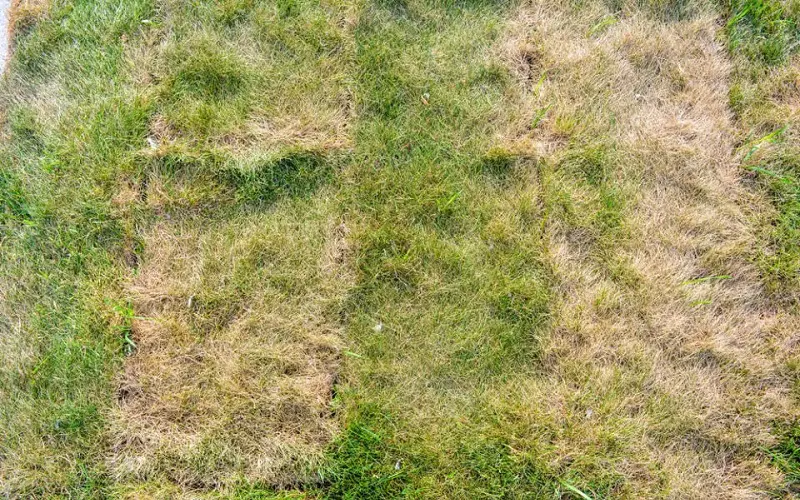
Koxae Sun/Shutterstock
A lack of sufficient moisture often causes wilting or discolored grass. The same holds true for grass, where you see footprints after walking across it, with the blades sticking down instead of bouncing back up.
Changing your schedule to water your lawn earlier in the day and for a slightly longer time or watering the grass more regularly will help curb dryness.
The Type of Lawn
The season, the zone you’re in, and, most critically, the type of grass you’re growing all influence how long you should water your lawn.
Different lawn types require different watering and maintenance techniques, so it’s essential to know your type of lawn.
Warm-season grasses, such as Zoysia and Bermuda grass, thrive in temperatures above 80 degrees.
Growth slows down as the temperatures drop, but it still requires moisture to stay healthy. Continue to water them as long as the grass grows and requires cutting regularly.
You should not fertilize warm-season lawns in the fall. Wait until the active growth season begins in the spring. Cool-season grasses such as bluegrass, fescue, and rye resume active growth after summer dormancy.
Although evaporation rates are low because of the cool fall temperatures, these grasses still require 1–1.5 inches of water every week until frost stops the growing season.
Cool-season grasses are also often fertilized in the fall. It’s critical to water immediately after fertilizing to wash the fertilizer off the grass blades and into the soil. This process is called “watering in.”
Lawn Watering FAQ
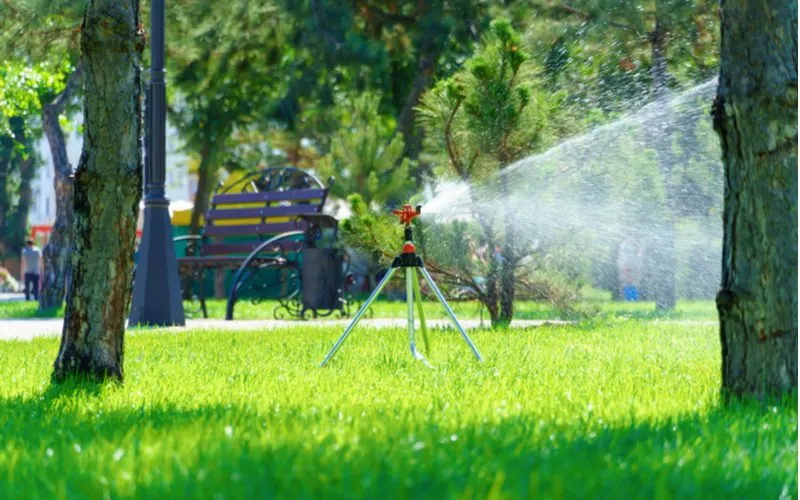
s_oleg/Shutterstock
How long should I water the grass?
You should water it for 15-30 minutes, depending on the dryness of the soil. Aim to irrigate the lawn once or twice a week with 1-2 inches of water.
Is it best to water in the morning or night?
Watering your lawn in the morning is preferable, as waiting until evening risks allowing fungus to bloom in your moist yard overnight. Avoid peak temperatures between noon and 2 p.m. and water in the mid-afternoon if you cannot get up early.
Is it possible to burn grass by watering it in the sun?
While dry grass can scorch, watering it in the Sun cannot cause healthy grass to burn. Grass burning in the Sun is simply a myth.
How do I know if I overwater my lawn?
If you overwater your grass, you can tell immediately by paying attention to the texture of your lawn. A grass that is “squishy” is a telling indicator. Another effect of excessive watering is yellow, dying patches of grass.
What’s the Best Time to Water Grass?
A green lawn is beautiful to look at and even helps increase the curb appeal of your home.
The good thing is that you don’t have to be an expert to grow healthy grass. Sure, having a green thumb helps, but anyone can do it.
Understanding the optimal time of day to water your lawn is a crucial component of lawn care, one with which everyone should be familiar.

